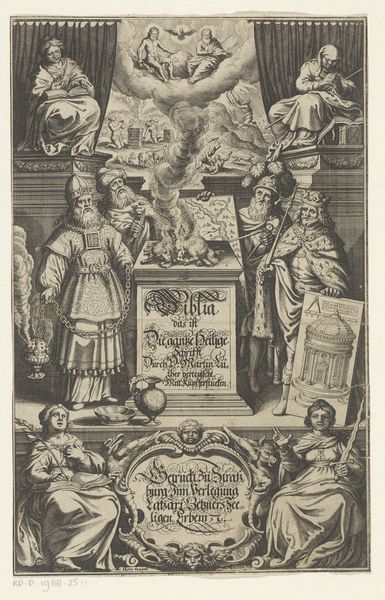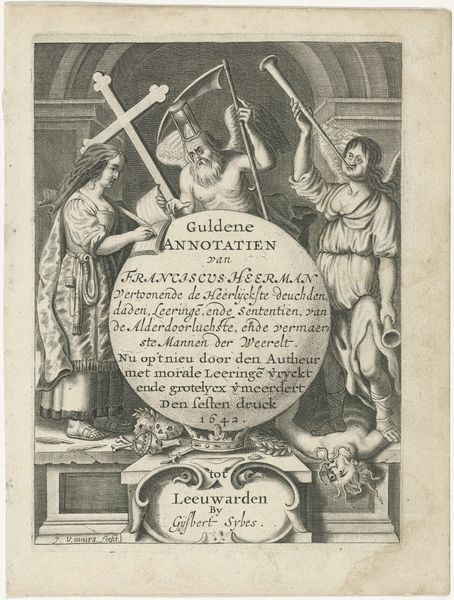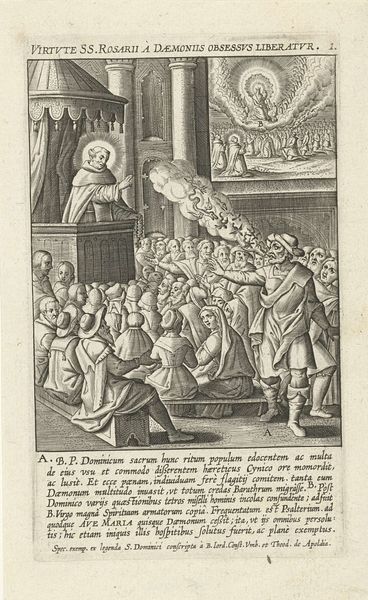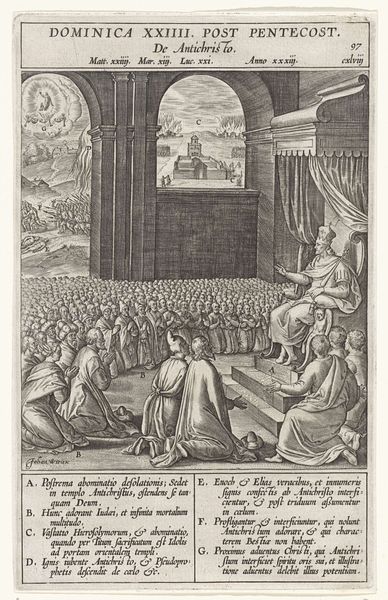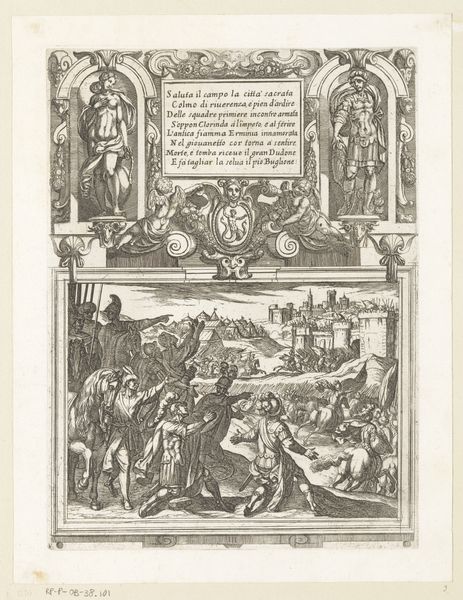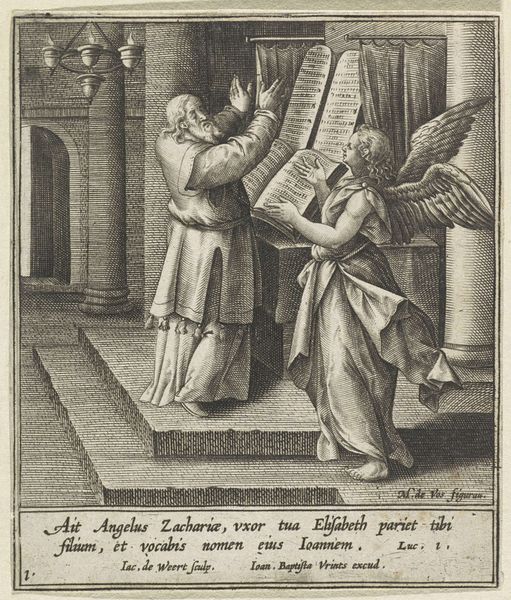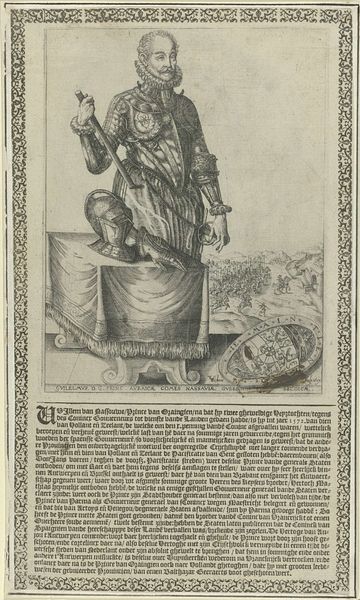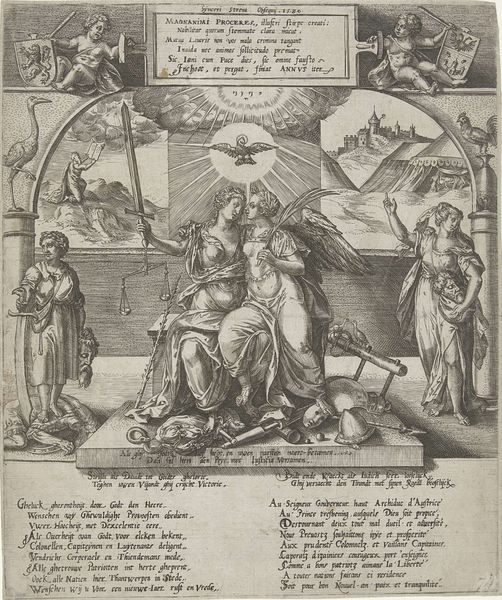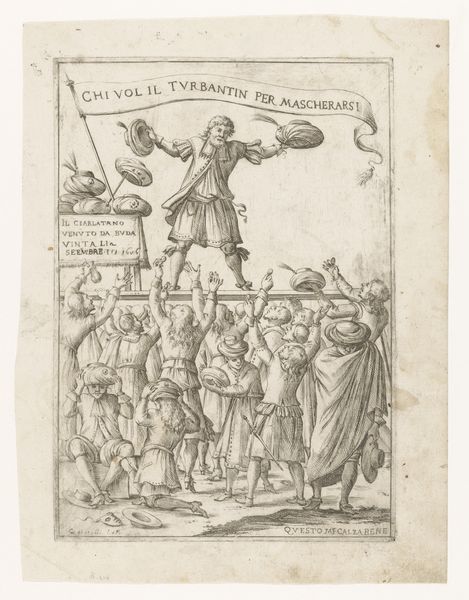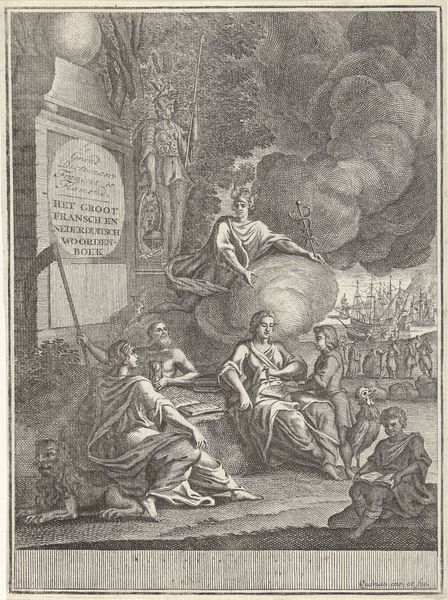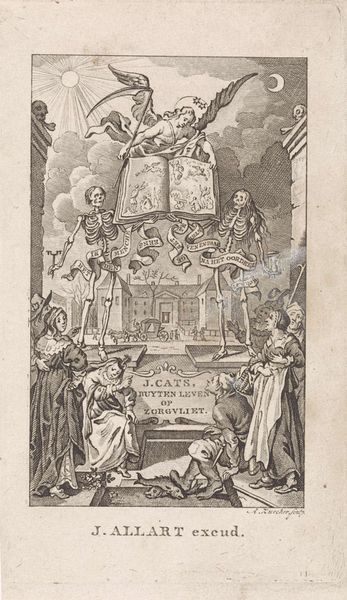
print, engraving
#
narrative-art
# print
#
history-painting
#
engraving
Dimensions: height 180 mm, width 136 mm
Copyright: Rijks Museum: Open Domain
Curator: Hendrick Stuyfsand's 1662 engraving, "Vergeving van zonden," or "Forgiveness of Sins" presents a fascinating study in religious imagery. What do you find striking about this piece? Editor: Well, it's really detailed! There's a lot going on. The symmetry and the use of these framed scenes are visually compelling. But it’s a bit overwhelming, to be honest. It feels a bit like religious propaganda, though. What do you see in this work? Curator: It’s crucial to consider the context. The 17th century was a period of intense religious and political strife. Prints like these were often used to propagate specific doctrines. Think about the intended audience, how would this imagery resonate with them, and perhaps even shape their beliefs? Editor: So, you are saying this was a way of visually explaining pretty difficult theological concepts to everyday people who probably couldn't read the long passage at the bottom? Curator: Precisely. Now, look at the composition. On the left, we see a depiction of "Sin" and on the right, "Repentance". The central figure, blinded, presumably is in a state of sin, blocking their view from seeing what's awaiting them, like Christ in the Heavens, which they will be freed of once cleansed of "Sin". Consider how this binary might reinforce societal expectations and control behavior. Are you seeing similar kinds of propaganda in any present-day formats? Editor: Hmmm, in that context, I understand how framing everything through stark contrast in order to promote particular actions works as cultural and political persuasion. Maybe similar to contemporary political cartoons. Curator: Yes, think more deeply about art's role in society, its potential to reflect, shape, or even challenge prevailing power structures. It definitely casts a new light on understanding artwork of that period. Editor: Absolutely! It gives me so much more insight, realizing how politics are communicated to people of the period, through artwork. Curator: Indeed. It really forces you to reflect not just on art, but it's lasting public role throughout history.
Comments
No comments
Be the first to comment and join the conversation on the ultimate creative platform.
